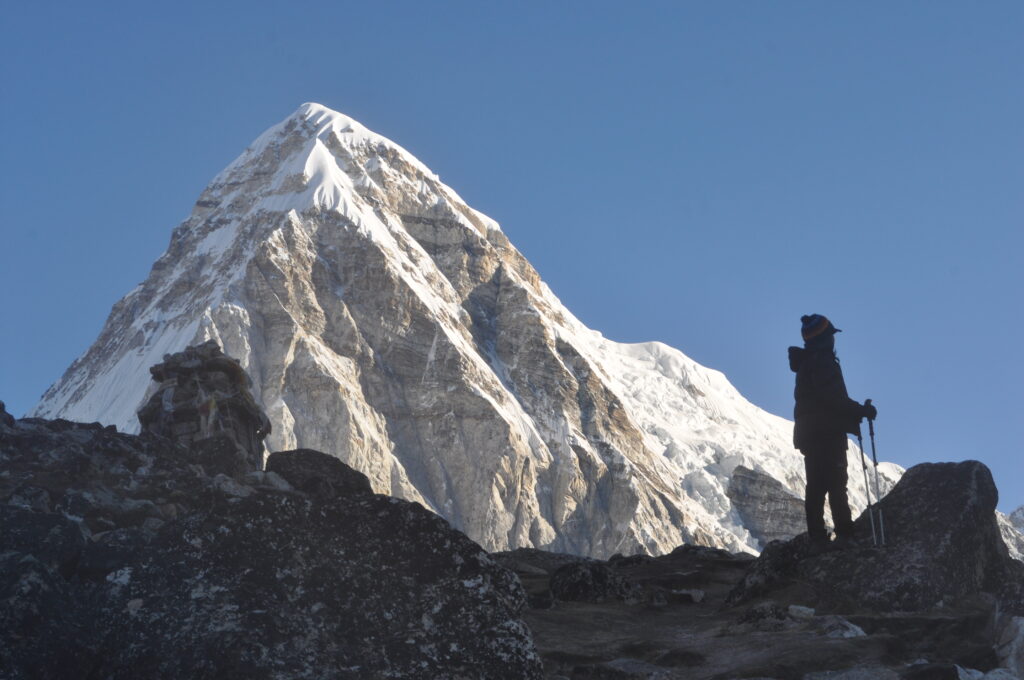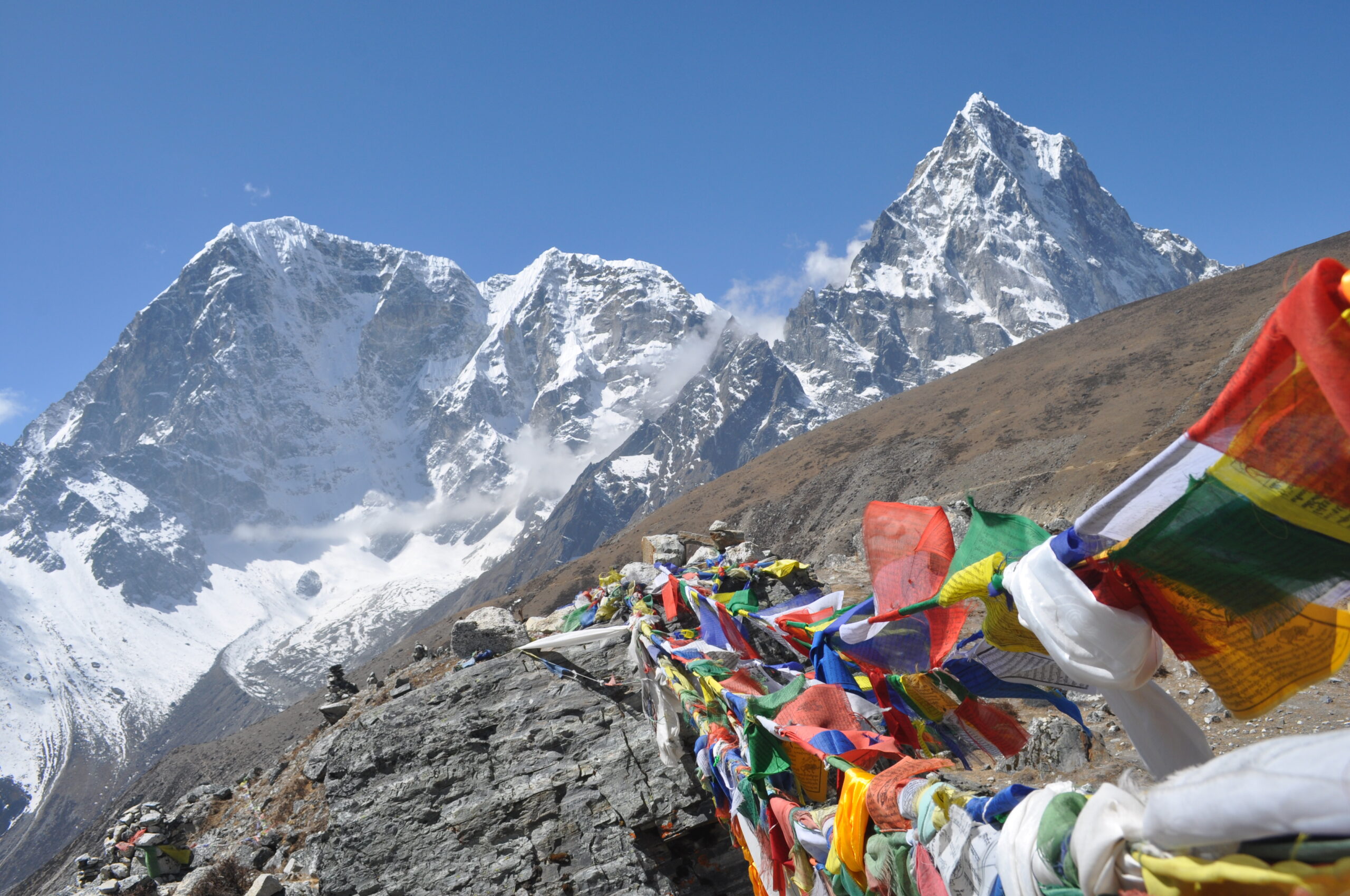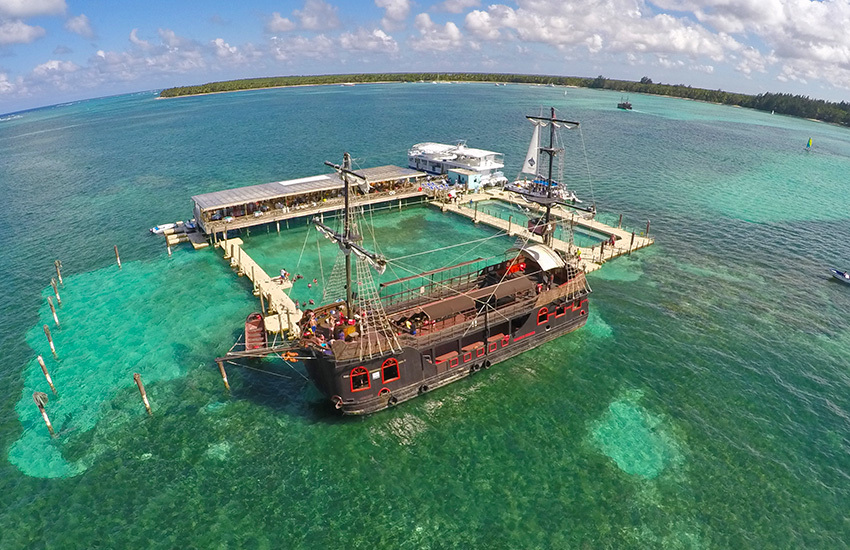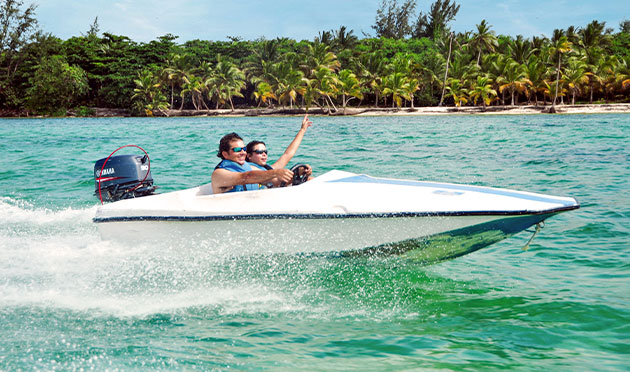Everest Base Camp Trek – Need to Know before plan

The Everest Base Camp Trek is one of the most popular trekking destinations in the world, offering a chance to explore the breathtaking beauty of the Nepalese Himalayas while trekking to the base of the tallest mountain on Earth, Mount Everest.
The trek typically starts and ends in the city of Kathmandu, with a scenic flight to Lukla, the starting point of the trek. From there, trekkers follow the Dudh Kosi river, passing through charming Sherpa villages, forests, and alpine meadows. Along the way, they get the chance to visit local monasteries, try traditional Sherpa cuisine, and get up close with the awe-inspiring peaks of the Himalayas.
One of the highlights of the trek is the visit to the Base Camp of Mount Everest, where trekkers can stand at the foot of the world’s tallest mountain and soak in the stunning views. The trek also offers the chance to visit Kalapatthar, a viewpoint that offers panoramic views of the surrounding peaks, including Mount Everest.
The trek is physically challenging, but with proper acclimatization and preparation, it is achievable for most people. It usually takes about 10-14 days to complete the trek, with a range of accommodation options available, from basic teahouses to more comfortable lodges.
Outline Itinerary
Day 1: Arrival in Kathmandu and transfer to hotel
Day 2: Fly from Kathmandu to Lukla (2,800m) and trek to Phakding (2,652m)
Day 3: Trek from Phakding to Namche Bazaar (3,440m)
Day 4: Acclimatization day in Namche Bazaar
Day 5: Trek from Namche Bazaar to Tengboche (3,870m)
Day 6: Trek from Tengboche to Dingboche (4,410m)
Day 7: Acclimatization day in Dingboche
Day 8: Trek from Dingboche to Lobuche (4,940m)
Day 9: Trek from Lobuche to Gorak Shep (5,170m) and visit to Everest Base Camp (5,364m)
Day 10: Hike to Kalapatthar (5,555m) and back to Gorak Shep
Day 11: Trek from Gorak Shep to Pheriche (4,371m)
Day 12: Trek from Pheriche to Namche Bazaar
Day 13: Trek from Namche Bazaar to Lukla
Day 14: Fly from Lukla to Kathmandu
Best season for Everest Base Camp Trek
The best season for the Everest Base Camp Trek is from September to November and from March to May. During these months, the weather is relatively stable, with clear skies and warm days. The views of the mountains are also better during these months. In September and October, the skies are usually crystal clear and the temperature is warm, making it ideal for trekking. In March and May, the weather starts to get warmer, with fewer chances of snow and ice on the trail.
Avoiding the monsoon season (July and August) is recommended as the trails can be slippery and the visibility is poor due to heavy rains. Winter (December to February) is also a difficult time to trek as the trails are often covered in snow and the temperature can be very cold.

Explore more: Everest three passes Trek, Everest Panorama Trek , Everest Base camp luxury trek
Everest Base Camp Trek Permit
A permit is required to undertake the Everest Base Camp Trek. The main permit required is the Sagarmatha National Park Permit, which allows access to the park and the trekking route.
In addition to the Sagarmatha National Park Permit, a TIMS (Trekkers’ Information Management System) card is also required. The TIMS card is used to manage the flow of trekkers in the region and to ensure their safety.
Both the Sagarmatha National Park Permit and the TIMS card can be obtained through a trekking agency or in person at the Nepal Tourism Board in Kathmandu. The cost of the permit varies depending on the season and the nationality of the trekker, but it is typically around $30 to $50 for the Sagarmatha National Park Permit and around $20 to $30 for the TIMS card.
Details plan of Everest Base Camp Trek
Day 1: Arrival in Kathmandu
Upon arrival in Kathmandu, you will be greeted by a representative from your trekking company and transferred to your hotel. You will have the rest of the day to explore the city and acclimate to the altitude.
Day 2: Fly to Lukla and Trek to Phakding
In the morning, you will take a 30-minute flight from Kathmandu to Lukla, the starting point of the trek. From here, you will begin your trek to Phakding, a small village located about 3 hours away. The trail is mostly downhill and follows the Dudh Koshi River, providing stunning views of the surrounding mountains.
Day 3: Trek to Namche Bazaar
Today, you will continue your trek to Namche Bazaar, a Sherpa village located at an altitude of 3440 meters. The trail is strenuous, with a steep ascent and several uphill sections, but the views of the surrounding mountains are worth the effort.
Day 4: Rest Day in Namche Bazaar
Today is a rest day in Namche Bazaar, which is an opportunity to acclimate to the altitude and explore the village. You can visit the local market, visit the Everest National Park Visitors’ Center, or take a day hike to nearby villages.
Day 5: Trek to Tengboche
Today, you will continue your trek to Tengboche, a village located at an altitude of 3870 meters. The trail is mostly uphill, but the views of the surrounding mountains and the Tengboche Monastery make the effort worth it.
Day 6: Trek to Dingboche
Today, you will continue your trek to Dingboche, a village located at an altitude of 4360 meters. The trail is mostly downhill, with several uphill sections, and offers stunning views of the surrounding peaks.
Day 7: Rest Day in Dingboche
Today is a rest day in Dingboche, which is an opportunity to acclimate to the altitude and explore the village. You can take a day hike to the nearby Nangkartshang Peak or simply relax in the village.
Day 8: Trek to Lobuche
Today, you will continue your trek to Lobuche, a small village located at an altitude of 4910 meters. The trail is strenuous, with several uphill sections, but the views of the surrounding peaks make the effort worth it.
Day 9: Trek to Gorak Shep and Visit to Everest Base Camp
Today, you will continue your trek to Gorak Shep, a small village located at an altitude of 5160 meters. From here, you will take a side trip to Everest Base Camp, located at an altitude of 5364 meters. The trail to Base Camp is strenuous, but the views of the surrounding peaks and the thrill of being so close to the world’s highest peak make the effort worth it.
What other trek you can do in khumbu region except EBC trek
The Khumbu region in Nepal is a trekker’s paradise, with a variety of trekking options to choose from. Some popular treks in the region besides the Everest Base Camp Trek include:
- Gokyo Lakes Trek: This trek offers stunning views of the high peaks of the Khumbu region, including Mount Everest, and visits to the serene Gokyo Lakes.
- Three Passes Trek: This trek takes trekkers over three high mountain passes, offering a challenging yet rewarding trekking experience with breathtaking views of the surrounding peaks.
- Ama Dablam Base Camp Trek: This trek takes trekkers to the base of the iconic peak of Ama Dablam, offering stunning views of the surrounding peaks and an opportunity to explore the rich culture of the Sherpa people.
- Island Peak Climbing: This trek is a combination of trekking and climbing, taking trekkers to the summit of Island Peak, a popular peak in the Khumbu region.
Conclusion
Overall, the Everest Base Camp Trek is an once-in-a-lifetime adventure that offers a unique blend of cultural, natural, and outdoor experiences. If you’re looking for a trip that combines challenge, adventure, and breathtaking scenery, this trek is definitely worth considering.





